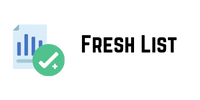A few months ago, we hosted Patrick Valibus, founder of 410 Gone , for a webinar on improving crawl budget.
If you weren’t able to attend, here are the key points from this practical and enriching conference.
Cloaking White Hat
Patrick begins with the punchline: “Cloaking is not a crime.” His thoughts will continue along two axes: how to better use the crawl budget and how to increase it.
But first, he reminds us of some definitions:
- The difference between White Hat and Black Hat : these are SEO practices, white hat practices do not present any particular danger while black hat practices risk generating a Google penalty.
- Cloaking : A technique that involves showing b2b email list different content to two different entities. For example, one version to Google and another to the user. It can also be used to prevent bots from repeatedly crawling your site (spam bots, for example), thus saving server resources.
- Page Rank : an indicator of a page’s notoriety in relation to a whole (internal Page Rank of a site, global Page Rank). Of course, it is no longer communicated by Google, nevertheless it remains a widely used indicator.
- Crawl budget : The amount of time Google spends on when a company becomes very well-known your site per day. The longer the time, the better, as it’s more likely to find content worth presenting to users.
Before focusing on White Hat cloaking, Patrick lists some highly penalizable Black Hat practices:
- edit content for gbot,
- edit content for AdWords,
- cloaker external links.
To understand cloaking, it’s important to know how Google bot works. What does it do on your site?
In reality, it’s like us: it has a to-do list, and once clean email on your site, it crawls a whole bunch of URLs. For each one, it takes the plain text version, identifies a certain number of patterns in the source code, and adds URLs to visit for the next time in its crawl queue. The goal is to ensure that the bot isn’t directed towards unnecessary elements.
